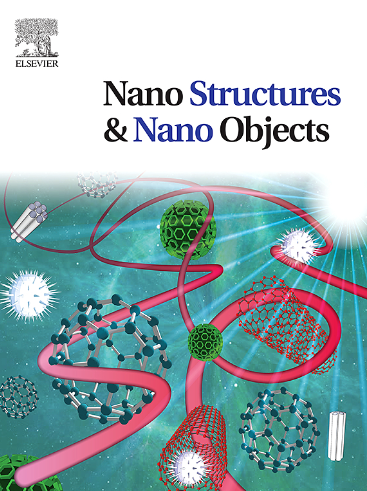The prospective contribution of kesterites to next-generation technologies
IF 5.45
Q1 Physics and Astronomy
引用次数: 0
Abstract
Kesterite-based Cu₂ZnSn(S,Se)₄ (CZTSSe) thin films have emerged as versatile and sustainable materials for a wide spectrum of next-generation technologies, including solar photovoltaics, photodetectors, sensors, thermoelectric devices, photoelectrochemical water splitting, energy storage systems (such as lithium-ion batteries and supercapacitors), and even antibacterial treatments. In the realm of photovoltaics, CZTSSe thin-film solar cells have achieved a notable power conversion efficiency of 12.6 %. This review delves into both encapsulated and non-encapsulated device structures, examining their structural stability and degradation mechanisms over time. The key advantages of CZTSSe include their earth-abundant, non-toxic composition, tunable optoelectronic properties, and compatibility with low-cost, scalable fabrication techniques. Such material has favorable empirical properties at both the nano- and micro-level, such as a tunable direct bandgap (∼1.0–1.5 eV), high absorption coefficient (>10⁴ cm⁻¹), earth-abundant and non-toxic elemental composition, and potential for low thermal conductivity—traits that are especially beneficial for photovoltaic and thermoelectric applications. These features strongly align with global sustainability goals and the principles of a circular economy, particularly through reduced environmental impact and the potential for recycling. The review also addresses critical challenges related to stability, reproducibility, and ageing effects, providing insights into defect passive action, interface engineering, and compositional tuning to enhance long-term performance. Additionally, the potential of CZTSSe for material and energy storage is thoroughly explored, reinforcing the material’s promise beyond traditional photovoltaics. By presenting recent advancements, fabrication strategies, and emerging multifunctional applications, this review underscores the transformative potential of CZTSSe in shaping a sustainable technological future.
kesterites对下一代技术的潜在贡献
kesterte基cu₂ZnSn(S,Se)₄(CZTSSe)薄膜已经成为广泛的下一代技术的通用和可持续材料,包括太阳能光伏,光电探测器,传感器,热电器件,光电化学水分解,储能系统(如锂离子电池和超级电容器),甚至抗菌处理。在光伏领域,CZTSSe薄膜太阳能电池的功率转换效率达到了12.6 %。这篇综述深入研究了封装和非封装的设备结构,研究了它们的结构稳定性和降解机制。CZTSSe的主要优点包括其丰富的地球,无毒的成分,可调谐的光电特性,以及与低成本,可扩展的制造技术的兼容性。这种材料在纳米和微观水平上都具有良好的经验特性,例如可调的直接带隙(~ 1.0-1.5 eV),高吸收系数(>10⁴cm⁻¹),地球丰富且无毒的元素组成,以及低导热性的潜力-这些特性特别有利于光伏和热电应用。这些特点与全球可持续发展目标和循环经济原则非常一致,特别是通过减少对环境的影响和回收利用的潜力。这篇综述还讨论了与稳定性、可重复性和老化效应相关的关键挑战,提供了对缺陷被动作用、界面工程和组合调整的见解,以提高长期性能。此外,对CZTSSe在材料和能量存储方面的潜力进行了深入的探索,加强了该材料超越传统光伏的前景。通过介绍最新的进展、制造策略和新兴的多功能应用,本综述强调了CZTSSe在塑造可持续技术未来方面的变革潜力。
本文章由计算机程序翻译,如有差异,请以英文原文为准。
求助全文
约1分钟内获得全文
求助全文
来源期刊

Nano-Structures & Nano-Objects
Physics and Astronomy-Condensed Matter Physics
CiteScore
9.20
自引率
0.00%
发文量
60
审稿时长
22 days
期刊介绍:
Nano-Structures & Nano-Objects is a new journal devoted to all aspects of the synthesis and the properties of this new flourishing domain. The journal is devoted to novel architectures at the nano-level with an emphasis on new synthesis and characterization methods. The journal is focused on the objects rather than on their applications. However, the research for new applications of original nano-structures & nano-objects in various fields such as nano-electronics, energy conversion, catalysis, drug delivery and nano-medicine is also welcome. The scope of Nano-Structures & Nano-Objects involves: -Metal and alloy nanoparticles with complex nanostructures such as shape control, core-shell and dumbells -Oxide nanoparticles and nanostructures, with complex oxide/metal, oxide/surface and oxide /organic interfaces -Inorganic semi-conducting nanoparticles (quantum dots) with an emphasis on new phases, structures, shapes and complexity -Nanostructures involving molecular inorganic species such as nanoparticles of coordination compounds, molecular magnets, spin transition nanoparticles etc. or organic nano-objects, in particular for molecular electronics -Nanostructured materials such as nano-MOFs and nano-zeolites -Hetero-junctions between molecules and nano-objects, between different nano-objects & nanostructures or between nano-objects & nanostructures and surfaces -Methods of characterization specific of the nano size or adapted for the nano size such as X-ray and neutron scattering, light scattering, NMR, Raman, Plasmonics, near field microscopies, various TEM and SEM techniques, magnetic studies, etc .
 求助内容:
求助内容: 应助结果提醒方式:
应助结果提醒方式:


